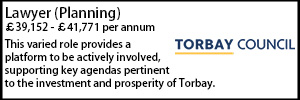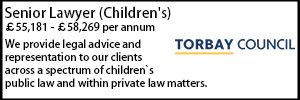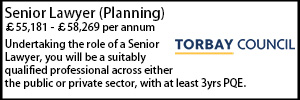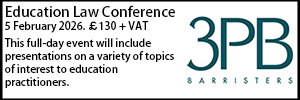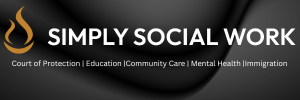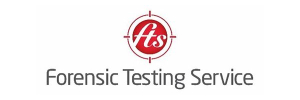Bans on prayer in school
- Details
In a high-profile ruling, the High Court has rejected a legal challenge to a school prayer ban. Philip Wood explains why.
The High Court has dismissed a challenge from a pupil at the Michaela Community School, a secondary school in Wembley, London, who argued that a ban on prayer in the school was a breach of the Equality Act as well as her Human Rights. There was also a related challenge to two suspensions that the pupil had received on the basis that they were not procedurally fair.
The pupil is a practising Muslim and the case focused on the Duhr or Zuhr prayer, which is required to be undertaken during a period of time based on when the sun is at its highest point. Whilst this does not overlap with the school’s lunchbreak period all year, it did from late September through to the end of March.
There was no challenge to the inability of the pupil to attend prayers at other times, on the basis that she accepted that she could not miss lessons. Islam permits prayers to be made up later that have been missed, a practice known as Qada, but the pupil explained that this was less meaningful than performing the prayer at the right time and she felt she should be able to perform it during 25 minutes of free time during lunch.
Disciplinary ethos
The school places a high importance on both its disciplinary ethos and that of a team ethos. These were demonstrated from the behaviour policy and its application, which would be considered very strict in comparison to other schools.
The team ethos shows through in the ‘family lunch’ when pupils in groups of six have lunch together with a teacher or visitor and each pupil has a specific role, the rule of four that prevents pupils socialising in groups of more than this and a general emphasis on social integration in what is an inner-city area with a high percentage of free school meal pupils.
Pupils who are fasting are not permitted to miss the family lunch or sit separately. In addition to this the other half of the lunch period was not free time and pupils had a choice of time in the school yard, time in the library, working in the computer room or taking part in one of the lunchtime clubs.
‘Guided socialisation’
They were not able to move around the school building and pupils still had to adhere to the rule of 4, with ‘guided socialisation’ taking place in the school yard, which involved teachers ensuring that no one was left out by actively intervening on conversations and games.
The school introduced the ban on prayer formally from March 2023 although the pupil explained that it was felt that prayer was not permitted before this. The formal policy was triggered by pupils praying in the school yard from March which, because this was in full view of passers-by, triggered a great deal of negativity towards the school and included a fake bomb threat, a brick being thrown through a window of one of the teachers and glass bottles being thrown into the school yard.
The European Charter on Human Rights
The pupil argued that this ban breaches Article 9 of the European Charter on Human Rights which provides for freedom of thought, conscience and religion. On this ground, the court held that there was no interference with this right, given the right was a freedom to do so, rather than an absolute right.
Considerable reliance was placed by the court in the fact that the pupil had been enrolled at a school that she knew would provide restrictions on her ability to manifest her religion and that was secular. She could have also moved to another school if she felt strongly about it her need to pray and no evidence was provided that this would not be possible.
It was nonetheless held that even if there had been an interference with this right, that it was proportionate given that there was concern that if prayer indoors was allowed there might be intimidation of Muslim pupils to pray by others.
Team ethos of social cohesion
Additionally, this went against the team ethos of social cohesion in that Muslim pupils would spend time apart from others. There would also be practical difficulties according to the school with finding space and having teachers monitor it.
Indirect discrimination
For similar reasons, the court rejected the claim that the ban amounted to indirect discrimination under the Equality Act. Although the court found that there was a detriment to the pupil, given there is a different test than under the Human Rights Convention, the court still found the decision was not discriminatory because it found it was proportionate to achieving a legitimate aim for the same reasons as with the human rights challenge.
It was also found that the public sector equality duty had not been breached by the Governing Board when it took the decision.
This case does not give carte blanche freedom to restrict prayer
Given the specific operation of the school, the case does not give carte blanche freedom for schools to restrict the ability for pupils to pray. The school had a specific ethos and way of working that meant that pupils were not actually ‘free’ at lunchtime as they would be in most schools and tied in with the practicalities of having a group of pupils pray, meant that the decision was proportionate.
The findings that this ban was not a detriment under human rights law may be a surprise to some but follows a similar line of cases in a school context including in the case of Begum that was about uniform and the wearing of the jilbab. That case made a similar finding that if a pupil could move to another school, there would not be an interference with the Article 9 right.
Considering whether suspensions were procedurally fair
The court finally went onto consider whether two suspensions of the pupil were procedurally fair. The first one, of two days, which related to the possession of a prayer mat and an interaction with a senior teacher, was held to be lawful even though the pupil had not been given an opportunity to give their version of events.
The second, which was for five days and related to an interaction between the pupil and other pupils, was found to be unlawful for the same reason, being that the pupil was not given an opportunity to give their version of events.
The decision underlines the importance of giving an opportunity to pupils to give their version of events before decisions are taken on a suspension or exclusion.
Philip Wood is a Senior Associate at Browne Jacobson.










